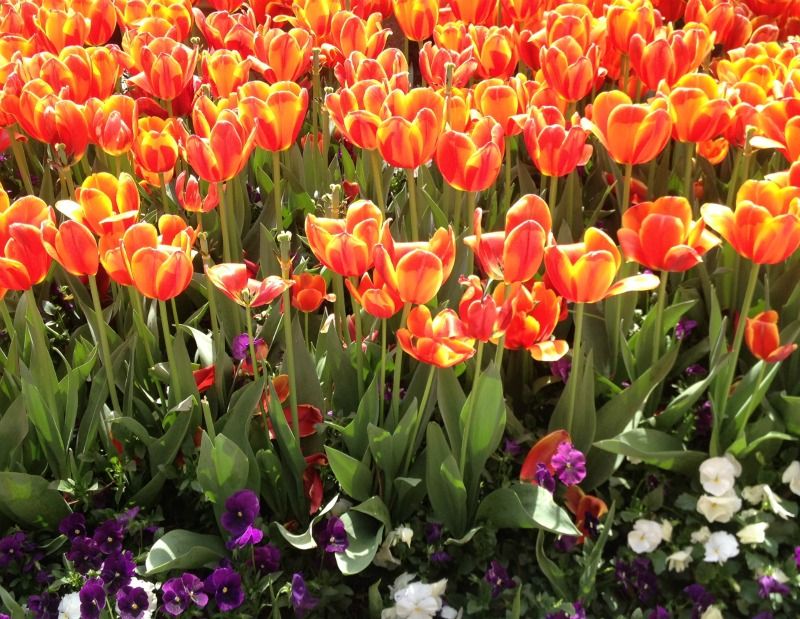
Achoo! Why Is The Pollen So Bad Right Now?

Many places around the United States are experiencing a record-breaking run of warm weather, but not everyone is embracing this year's early spring.
The no-jacket-required temperatures, along with a set of other complementary weather conditions, have sent trees into a flurry of pollen production, setting the stage for the scratchy throats, itchy eyes and achy noses that the allergy-afflicted among us know all too well.
On Weather Channel maps, large swaths of the country are shaded dark red — the color code for "very high" tree pollen levels — from the southeast to the Midwest to areas near the Rocky Mountains.
Triggered by a host of factors from soil and air temperatures to moisture levels, trees and plants across the country are blooming two or three weeks earlier than usual, according to Donald J. Leopold, a professor and chair of the State University of New York's Department of Environmental and Forestry Biology. "Everything is ahead everywhere," Leopold told OurAmazingPlanet. [Weirdo Weather: 7 Rare Weather Events]
A sprung spring
In Georgia, the Atlanta Allergy and Asthma Clinic recorded a record 8,164 pollen particles per cubic meter on Monday (Mar. 19), before the first day of spring. The previous record of 6,013 particles was set on April 12, 1999.
In Wisconsin last week, Gary C. Steven, an allergist who runs the Allergy, Asthma and Sinus Center, near Milwaukee, recorded a pollen count of 3,409. "That's the second highest tree pollen count I've seen in the last 17 years, and it was two weeks before we even normally start counting," Steven said in an interview.
Sign up for the Live Science daily newsletter now
Get the world’s most fascinating discoveries delivered straight to your inbox.
In fact, 2012 marks the earliest the doctor has ever climbed up to the roof of his practice to set up the pollen counter, which catches the offending particles much like glorified fly paper. It sucks in air and traps the microscopic pollen on a sticky film. Only allergenic pollen is recorded in counts, Steven said.
Balmy temperatures aren't the only culprit behind the recent rash of allergy alerts. The rain that's common come springtime essentially washes pollen from the air, but many parts of the country have been fairly dry this year.
In addition, strong winds can bring in pollen from far away, Leopold said, so some places are "getting a one-two punch: local pollen, and material coming from the Midwest or the South."
"It's been very windy the last few days," Steven said, "and winds bring pollen."

Pollen predictors
Also, favorable growing conditions in 2011 may have preserved more pollen in the nation's trees than usual, priming 2012 for a banner pollen year.
Flower buds, and thus the pollen they contain, form before trees close up shop for the winter, Leopold said. "Those buds blooming now were made last year," he said. The wimpy winter temperatures typical in the lower 48 states this season may have allowed more of those buds to survive.
However, since the pollen count for trees is predetermined the previous year, once the trees run out, they're done. Yet that offers little prospect for relief, Leopold said. Ragweed and other pests that torment the allergy-prone keep on flowering as long as favorable conditions persist.
"So unless the weather changes — and that's a big unknown — there's the potential for a much longer open window for pollen dispersal and pollen production for those plants," Leopold explained.
"When you get away from average conditions there are people and animals and plants that really thrive, and people and animals and plants that really suffer," he said.
Reach Andrea Mustain at amustain@techmedianetwork.com. Follow her on Twitter @AndreaMustain. Follow OurAmazingPlanet for the latest in Earth science and exploration news on Twitter @OAPlanet and on Facebook.











